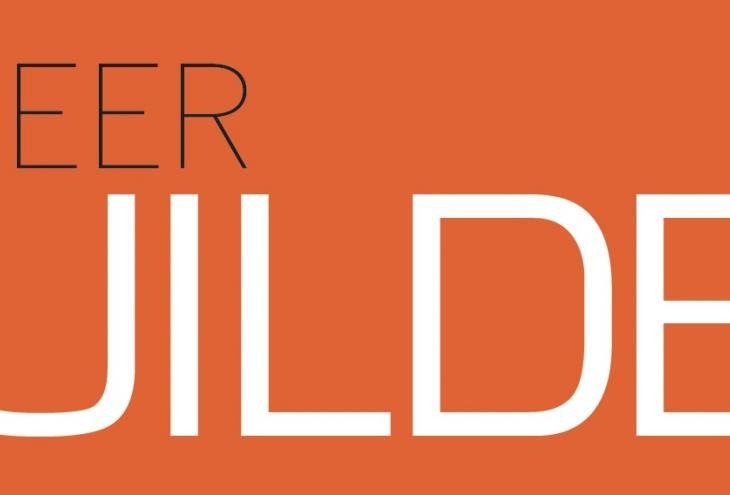First Nations Launch
spacegrant.carthage.edu/first-nations-launch
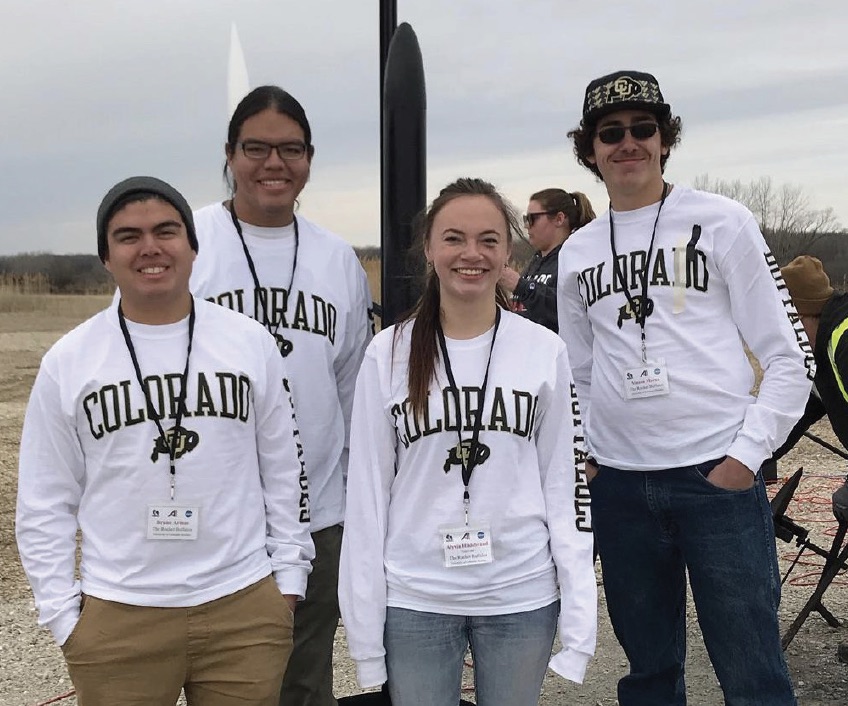
Mason Moran at the 2018 First Nations Launch (not pictured:
teammember Joel Gabriel Funtanilla)
A rare opportunity for undergraduate students to compete nationally as they design, build, and fly a rocket, the First Nations Launch (FNL) National Rocket Competition is an annual event. Now in its 10th year, FNL is the largest Native American rocket launch in the country and gives many students their very first chance to take part in an organized aerospace project.
The competition, held at the Richard Bong State Recreation Area in Kansasville, Wis., is open to teams of students who attend a tribal college or university and/or are members of an AISES College Chapter. Team members work together to conceive, design, and fabricate rockets that ultimately pass a series of prelaunch reviews according to contest specifications. Competition awards include a $3,000 grand prize that comes with an invitation to a NASA center, a $2,000 second prize, and a $1,000 third-place award, as well as team honors in additional categories such as rocket aesthetics and altitude achieved after liftoff.
All prospective contestants must complete an online application, and their teams of approximately four to six members are required to identify both a team leader and faculty advisor. In addition, faculty advisors are responsible for registering their teams and submitting a Rocket Team Launch grant application. Each team receives $3,000 for project and travel expenditures, with four days (three nights) of paid lodging and meals. Key competition milestones between application acceptance in the fall and the springtime launch weekend include virtual presentations to judging panels in order to ensure design integrity, safety, and flight readiness.
First Nations Launch is sponsored and organized by the Wisconsin Space Grant Consortium (WSGC), a member institution of the national network of Space Grant Consortia funded by NASA’s National Space Grant College and Fellowship Program. WSGC advisors and experts from its STEM industry partners are available to offer guidance to student teams throughout the competition process.
Ask a Participant and Some Advisors
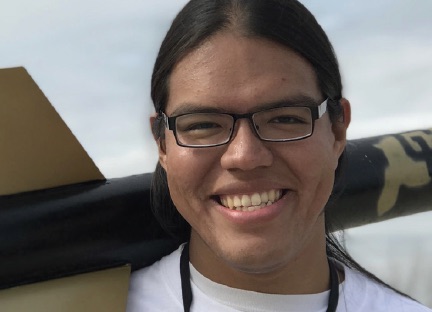
Aaron Ashley is a systems safety engineer for Raytheon who participated in the 2018 FNL competition as a graduate student and served as a judge for the 2019 contest. He holds a master’s degree in aerospace engineering
from the University of Colorado Boulder and a bachelor’s degree in aerospace engineering from the Massachusetts Institute of Technology (MIT). We asked Aaron, Mark Abotossaway, a structural analysis engineer at The Boeing Company and FNL advisor, and Christine Bolz, WSGC assistant director, about the competition.
Aaron, how did you become interested in the FNL competition? I grew up in Gretna, Neb., and always leaned toward STEM subjects, although I didn’t really have a concept of what engineering was as a career choice. I used to make model rockets just for fun, which is why I began looking into aerospace engineering and ended up pursuing it as a major at MIT. Right after MIT, I enrolled in graduate school at the University of Colorado, and our AISES chapter was organizing a team for First Nations Launch. I thought that was a great idea and signed up right away.
Christine, from your perspective, what is unique about FNL? In addition to being developed as an opportunity for Native Americans, the entire process, including what students can learn from our team members and industry experts, makes FNL unique. Our network of administrators and outside advisors includes Native American professionals, so students have an excellent opportunity to be part of a big event and see people like themselves who have participated in the program and then entered a STEM career.
Christine, do applicants need to have rocket-building experience? One of the valuable things about the FNL experience is that students can develop the skills and competencies they need as they go. We host virtual workshops, conduct safety reviews and inspections, and make judges and advisors available throughout the preparation period. That way participants are able to make great strides in their aerospace knowledge and know-how. It’s all about inspiring the next generation, whether a student chooses to stay on the reservation and use these skills in the community they love, or to one day work for a STEM leader like NASA or Boeing.
Mark, as a STEM professional and FNL advisor, what are some of the skills you see participants develop? There are so many different capabilities involved in the process. In addition to the STEM skills required, there are a number of so-called “soft skills” we see students develop and improve. They are challenged to learn planning tactics, take charge of project management, and enhance their communication skills. For some students, it’s the first time they’ve been required to do public speaking, and they have to reach beyond their comfort zone. Also, often it’s the first time participants have traveled any real distance from home, which makes the competition memorable from a personal development perspective as well.
Aaron, as a former competitor and now judge, what are some key takeaways for FNL student teams? Team members have to pull together and motivate themselves — and sometimes each other — in order to meet deadlines and keep everything moving in the right direction. All that requires close collaboration and dedicated focus over a number of months. Also, the launch weekend itself can involve on-the-spot troubleshooting and modifications depending on initial rocket performance or initial preparation. Just like real life, you may run into an unexpected obstacle and have to think fast and adjust. Teamwork, focus, and persistence are required — so it’s about a lot more than engineering, in a really good way.
Rochester Institute of Technology Future Faculty Career Exploration Program
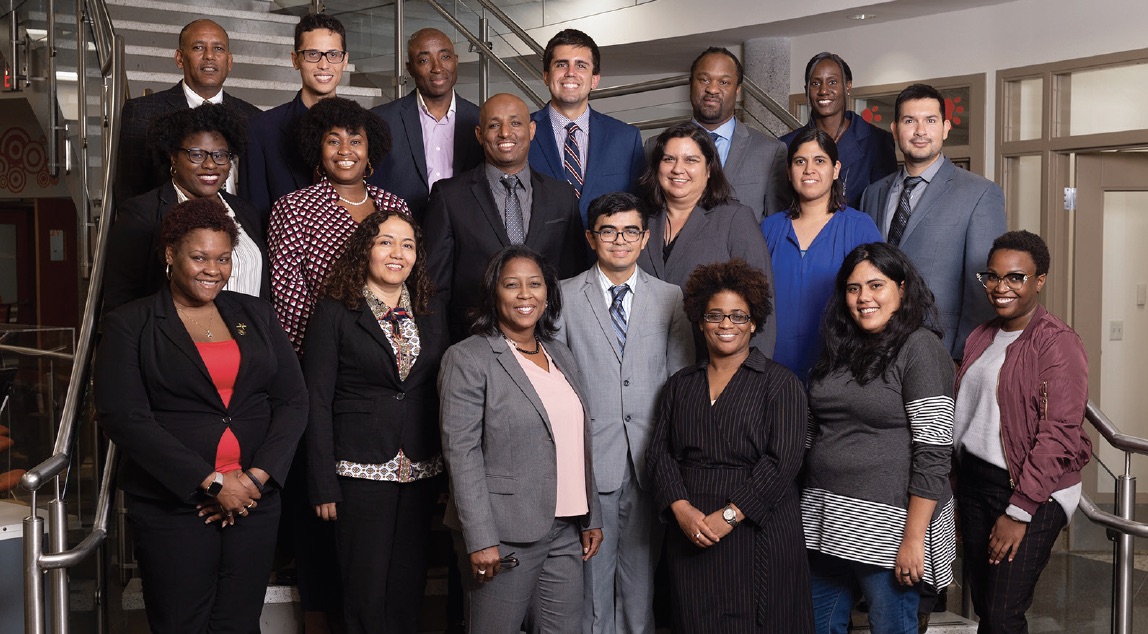
A commitment to diversity is at the heart of the Future Faculty Career Exploration Program (FFCEP) at the Rochester Institute of Technology (RIT) in Rochester, N.Y. Postgraduate students who participate in the FFCEP have the opportunity to network with RIT academic experts as they present their research and engage in panel discussions with the university’s African American, Latinx, and Native American faculty and students. The face-to-face events of the FFCEP take place every September over the course of four days (all travel and expenses paid) at the RIT campus.
The FFCEP is designed for scholars who are nearing the end of their doctoral or MFA studies, as well as postdoctoral students and junior faculty. Applicants should be able to articulate how they can contribute in meaningful ways to the university’s continuing commitment to cultural diversity, pluralism, and individual differences. According to the eligibility requirements, the program is primarily looking for applicants who are underrepresented and underserved in teaching professions, especially those of African American, Latin American, American Indian, or Alaska Native descent.
One of the program organizers, Faculty Diversity and Recruitment Interim Director Lorraine Stinebiser, describes the FFCEP as “a unique opportunity for scholars to explore what opportunities might be available to them based on their research interests and career aspirations.” She explains that the application process “is intentionally similar to the steps someone goes through to apply for a faculty position — so it’s a way to get scholars ready to be on the job market.” While the FFCEP aims to diversify faculty at RIT and beyond, it additionally serves to help facilitate professional relationships — between participants and also between participants and faculty — that endure far beyond the program.
The application process requires four documents: a resume, a cover letter that includes a statement of diversity, a teaching statement, and a research statement. For questions about the program, contact Stinebiser at losofr@rit.edu.
Ask a Participant
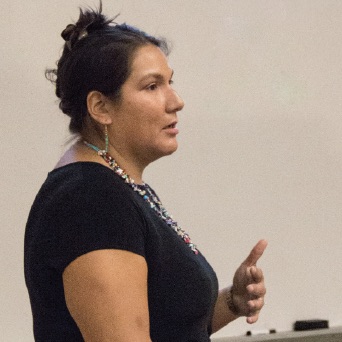
Dr. Naomi Lee, an assistant professor of chemistry and biochemistry at Northern Arizona University in Flagstaff, participated in the FFCEP in 2017. She has been involved with AISES since her undergraduate days at RIT, where she earned a degree in biochemistry. She also holds a PhD in chemistry from the University of Rochester, and was honored as the 2018 AISES Professional of the Year.
Where did you grow up, and how did you become interested in STEM? I grew up on the Seneca Cattaraugus Indian Reservation in New York, and I was interested in science from an early age. In school, I participated in a pre-college program called STEP (Science & Technology Entry Program), which was the result of a partnership between the Seneca Nation and the local university, SUNY Fredonia. When I got to RIT I didn’t have a clear path yet, but knew I wanted to focus on the sciences. I was better at math than I was at chemistry or biology, but with biochemistry I felt like I was getting the best of all worlds, with a combination of biology and chemistry, and some math as well.
How did you learn about RIT’s Future Faculty Career Exploration Program? When I was graduating with my PhD from the University of Rochester, I was still connected with faculty members at RIT. One of them sent me a link to the FFCEP application and suggested I consider it. I applied in 2013 but wasn’t accepted — and in retrospect, I’m glad that happened because I wasn’t quite ready yet for a faculty position. It wasn’t until 2017 that I felt sure about pursuing a faculty role — so I applied again, and I was accepted.
Describe the application process and preparing for the program. To apply, you go through basically the same process you follow when you apply for any faculty position, which is one of the things I liked about it. It forced me to be prepared with all the documents I would need. Also, preparing for the fall program meant I needed to already have my research presentation constructed by September. That turned out to be a great advantage for me, because by January I was out on the faculty job interview circuit around the country.
How did the program help you? It really gave me a great way to practice my presentation skills, take in feedback, and make adjustments, without the full pressure of being in an actual interview. I had the chance to meet faculty members from a number of different disciplines and talk about what I’d done since graduating from RIT, as well as what I wanted to do in the future. I was also able to connect with peers and hear peoples’ stories; some people I’m still in touch with today. Most of all, I think I left feeling very prepared for the next step in my career. I went into my interviews confident and ready, and I know the RIT Future Faculty program was a big reason for that.
Minority Ophthalmology Mentoring
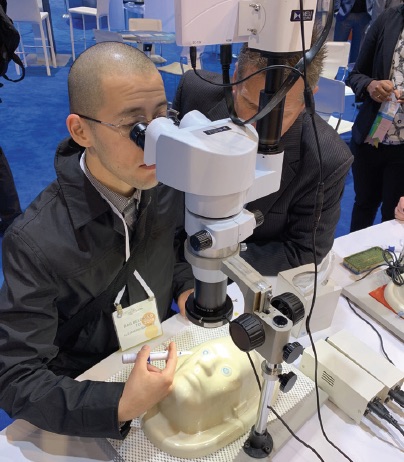 Less than 7 percent of ophthalmologists are underrepresented minorities, compared with 30.7 percent of the U.S. population. But the Minority Ophthalmology Mentoring (MOM) program has set its sights on closing that gap.
Less than 7 percent of ophthalmologists are underrepresented minorities, compared with 30.7 percent of the U.S. population. But the Minority Ophthalmology Mentoring (MOM) program has set its sights on closing that gap.
By helping new and prospective medical students from underrepresented minorities in medicine become more aware of opportunities in ophthalmology, and more prepared to pursue eye care as a specialty, they hope to increase the number of competitive minority ophthalmology residency applicants. With that mission front and center, the program was created as the result of a partnership between the American Academy of Ophthalmology (AAO) and Association of University Professors of Ophthalmology (AUPO).
After completing a two-year pilot, MOM officially welcomed its inaugural class in 2018. This annual opportunity gives participants exposure to specialized guidance in medical career planning and networking with successful ophthalmology residents and practitioners. In addition, participants benefit from a variety of educational resources, including practical experience with surgical procedures as well as the opportunity to learn more about how ophthalmologists impact community health by preventing vision loss from diseases such as diabetes and glaucoma.
MOM welcomes applications from underrepresented minority students who identify as black or African American, Hispanic or Latinx, or Native American (American Indian, Alaska Native, Native Hawaiian). The program is designed for students approaching their first or second year of medical school as well as college graduates entering their senior year. A significant highlight of the MOM experience for participants is attending AAO’s annual meeting. The deadline for the program is typically June 15, and approximately 30 to 35 students are accepted. For answers to questions, contact mentoring@aao.org.
Ask a Principal
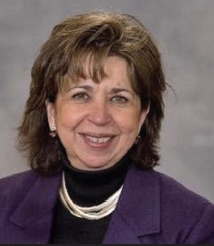
Jane Aguirre is director of the MOM program and the AAO’s vice president for membership and alliances.
How did the MOM program get started? The idea came from two African American ophthalmologists who are part of our leadership at the American Academy of Ophthalmology. The disparity we see in this medical field hasn’t changed in a number of years, and our board recognized the need to do something about it. So we partnered with the Association of University Professors of Ophthalmology and launched our pilot program.
How does the program work, and what are participants asked to do? Each student is matched with an ophthalmologist mentor, which we try to do along the lines of gender, race, and ethnicity. It’s the responsibility of each participant to remain in contact with their mentor as they become better oriented to the profession and subject matter. They’re also expected to attend our annual meeting, where we have a chance to familiarize students with all facets of ophthalmology. This is a high-tech specialty, and we give students exposure to some of the latest advances, tools, and procedures. There’s also an opportunity for hands-on experience. Of course, participants hear firsthand from ophthalmologists and residents about what they love about the profession.
Why is it important that students apply for the program as they enter their first or second year in medical school — or even as a college senior? Ophthalmology isn’t typically a rotation for medical students — they may get a week or a couple of days, or it’s an elective course. So students often don’t get exposed to the field until later in medical school. But ophthalmology is an early residency match, so students need to know about it early in their medical education. Their Step 1 exam results (for the U.S. Medical Licensing Examination) at the end of their second year are an important consideration for an ophthalmology residency program. That’s why we need to reach them early and help them prepare for a good Step 1 score.
Does the mentoring and support continue beyond the initial mentoring and annual event? As they build their professional network, students remain in contact with us, check in with their mentors, and continue to connect with their peers in the program. We’ve also begun to identify a second mentor for them at their own institutions, which can generate greater opportunities to shadow, do research, and gain insights. It’s all about helping these students get into an ophthalmology residency that’s right for them, and then succeed as practitioners.
Technology Student Association
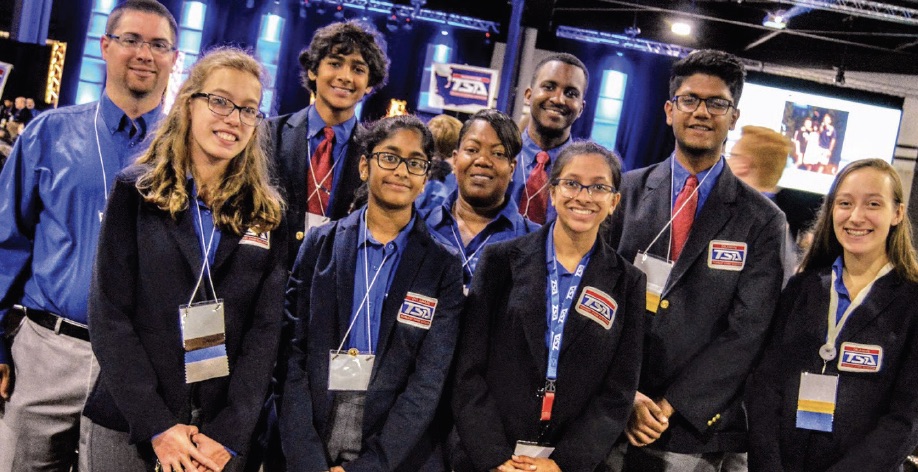
The nonprofit Technology Student Association (TSA) is dedicated exclusively to middle school and high school students engaged in STEM. More than 250,000 students from across the United States are members of TSA, and its work is supported by educators, parents, and business leaders who believe in the importance of technological literacy and STEM education.
TSA is widely known for helping members learn through competitive events, leadership opportunities, intracurricular activities, and community service. Its competitions take place at the state level and culminate with the National TSA Conference hosted annually in a different city. There are more than 60 middle and high school events every year where members can apply STEM skills in innovative ways, working individually or as teams.
The competitions encompass a diverse range of STEM categories, including biotechnology design, career prep, digital photography, dragster design, flight, medical technology, software development, and video game design. Guided by the motto “learning to lead in a technical world,” TSA hosts events structured to foster individual growth as well as leadership skills.
TSA members come from more than 2,000 schools in 48 states, and 39 percent are from underrepresented groups. The organization reports that 100 percent of TSA members are likely to graduate from high school, with approximately 75 percent pursuing a college education. In addition, more than 2,500 teachers nationwide serve as TSA advisors.
Ask a Participant
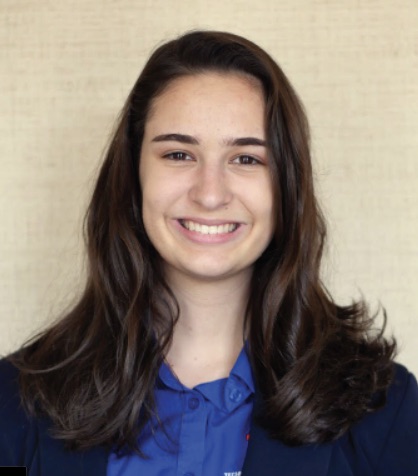
AISES member Abigail Reigner, Comanche, is a high school senior in Boyertown, Penn., who is enthusiastic about the positive influence of TSA on her education and career ambitions.
Tell us about yourself and your background. I’ve been very interested in technology and engineering since middle school. TSA has been a part of my life since I was young. My dad is a middle school TSA advisor, so I was involved with the organization long before I joined as a member.
What skills have you developed as a TSA member? Is there an important accomplishment you can share? TSA has taught me a variety of skills, such as CAD (computer-aided design), scriptwriting, and woodworking. They have events for everyone, from artistic categories like 3-D animation to more technical fields, like webmaster. One of my biggest accomplishments in TSA was being elected the 2018–2019 Pennsylvania TSA president. I worked hard to become president, and I am ecstatic to be giving back to the organization that has taught me so much.
How has TSA influenced your educational and career path, and what will you do next? One of my very first TSA projects was “Go Green Manufacturing,” where my team and I designed and built our own stools. It was a pivotal moment, and helped me realize that I want to be an engineer one day. After graduating, I plan to attend a four-year college and pursue a degree in civil engineering. Ultimately, I would like to earn my master’s and PhD in engineering.
What else would you like to tell our readers about TSA? TSA is a great club that promotes STEM skills and careers, much like AISES. It is a unique way to spark young people’s interest in STEM before college, and is a ton of fun. I would love to see many other Native Americans benefit from this organization the way I have.
Society of American Indian Government Employees Native Youth Track
saige.org/youth/youth-track-news
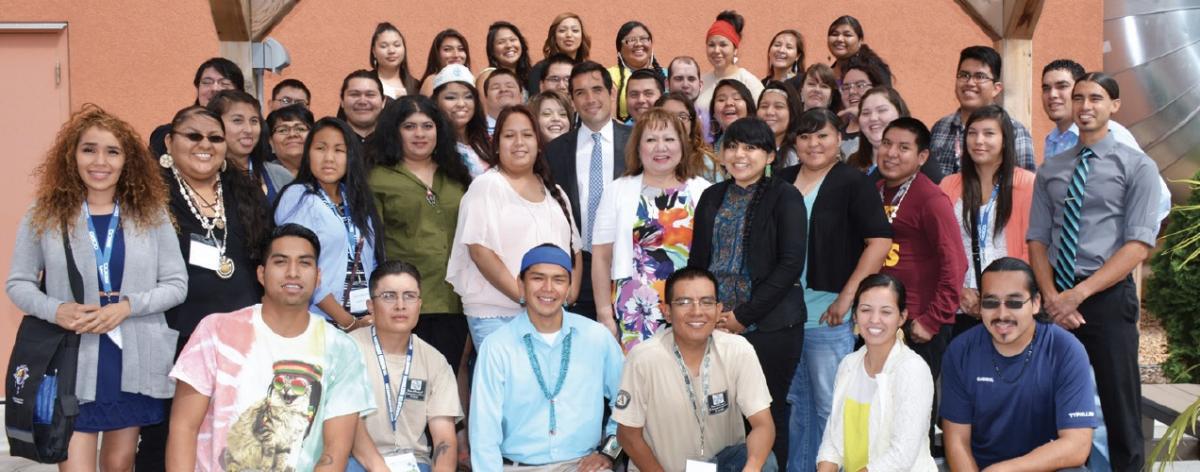
The Society of American Indian Government Employees (SAIGE) wants you to know about its National Training Program’s Native Youth Track, an annual opportunity for students to learn firsthand about careers with the federal government. The program offers participants a forum for meeting American Indian and Alaska Native federal employees and developing an in-depth understanding of the positive role that Native employees can play in their agencies.
SAIGE has designed its Youth Track to help Native American youth realize their full potential by providing leadership in their communities and schools, continuing their education to earn college degrees, and ultimately seeking a career in the government sector. The curriculum’s activities include leadership training, team-building exercises, events with Native speakers, and a cultural reception. After an initial series of information sessions, the Youth Track integrates with the broader National Training Program to offer new opportunities for education, mentorship, and networking. The culmination of the program is a national career fair that includes recruiters from schools and government agencies.
The Youth Track program fully funds applicants who are accepted. To be eligible, Native students should be at least 18 years old and no more than 25 years old as of June 1 of the year they are applying; enrolled and in good standing at an accredited high school, college, or university for the upcoming school year; and interested in earning a professional degree and the possibility of pursuing a career with the federal government. For more information, contact SAIGE Youth Program Director JoAnn Brant at brant.joann@epa.gov.
Ask Two Board Members
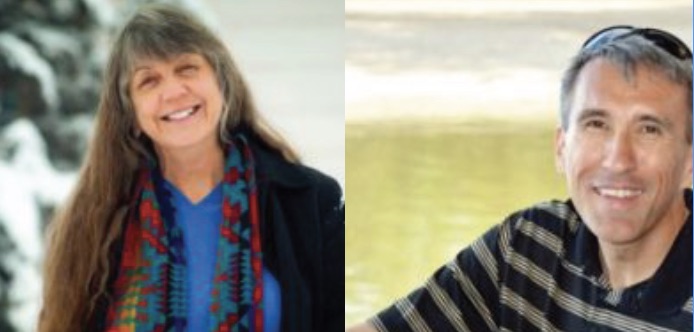
SAIGE board member Lori Windle was instrumental in the development of SAIGE as a federal employee and was the first chair of the founding board of directors in 2002. She is Anishinaabe, and is a citizen of the White Earth Nation enrolled in the Minnesota Chippewa Tribe. The SAIGE vice-chair, Duane Matt, is a geologist with the Division of Energy and Mineral Development. He’s a member of the Confederated Salish Kootenai and Pend D’Oreille tribes located on the Flathead Indian Reservation in western Montana.
How did SAIGE get started, and what inspired the Youth Track? Windle: In starting SAIGE, we wanted to increase the diversity of recruitment and retention efforts to build a better federal workforce. We felt that the more of us who were there, the better the decision-making would be when it comes to tribes. Of course, a key part of that mission is recruiting young people who are looking to expand their career options — of which there are so many in federal service. The EPA (Environmental Protection Agency) sponsored the first year of the Youth Track in 2005, and our program director, JoAnn Brant from the EPA — who really helped us get the program off the ground — continues to develop the program.
How have you seen the program help participants develop as students and individuals? Matt: A number of our participants come from rather isolated places, and the training allows them an opportunity to really come out of their shell and discover new possibilities. We see them develop in a wide range of areas, everything from interpersonal skills to public speaking. They learn an amazing amount in just a few days.
Windle: I would add that although our participants are from a variety of backgrounds, once they come together and engage in training activities and exercises, they start to realize how much they have in common. Then they begin to operate as a team and really support one another. Often, they stay connected beyond the program, and some even come back the next year to assist as student leaders.
What else would you say is distinct about the program? Matt: One of the things that’s unique and valuable about the program is that we rotate it among various Native communities across the country. The travel alone can be an incredible learning experience for our youth participants — a different location, climate, and culture every year. Windle: Also, by changing locations, we expose our attendees to different tribal communities and customs, which offers an additional layer of educational benefit. We’ve hosted the event in a real diversity of locations, including Tulsa, Green Bay, Scottsdale, Spokane, Denver, Fort Lauderdale, Traverse City, and Mohegan Sun.
What else stands out for you about this opportunity? Windle: This is an opportunity that can open doors. The power of peer support can’t be underestimated; our participants pull together and cheer each other on, whether they’re pushing to continue their education or considering a job they may fear is out of reach. Meeting and interacting with Native professionals can make a difference in students’ lives. I’ve seen shy and introverted students come into their own, and people uncertain about their future take big steps. Many participants establish connections they may keep up for years; others leave with job leads or even offers. I would add that federal employment doesn’t mean leaving home for good. There are many federal agencies that serve Native communities. We see people earn degrees and then serve their local communities in meaningful ways. There are all kinds of possibilities, and that’s what we hope participants will realize by experiencing this program.


